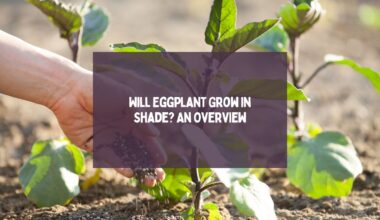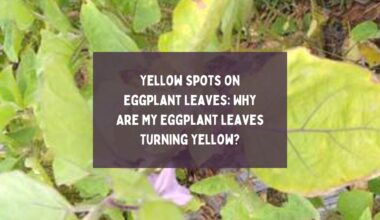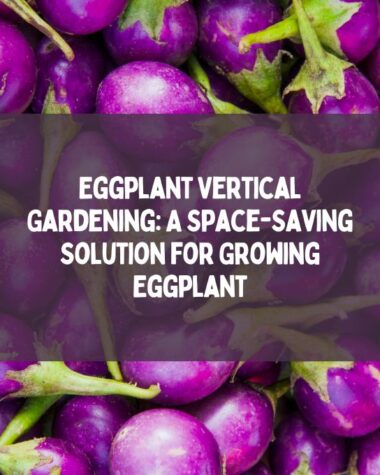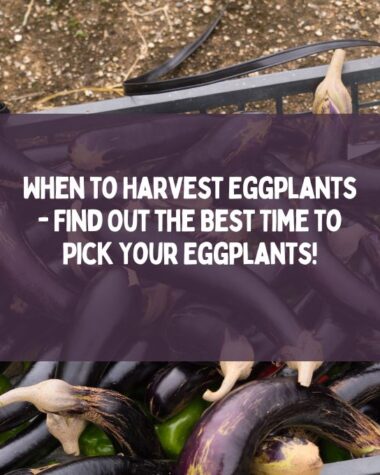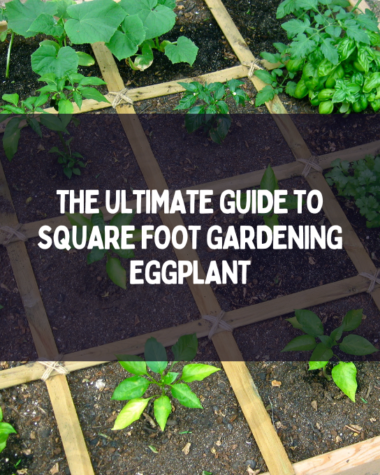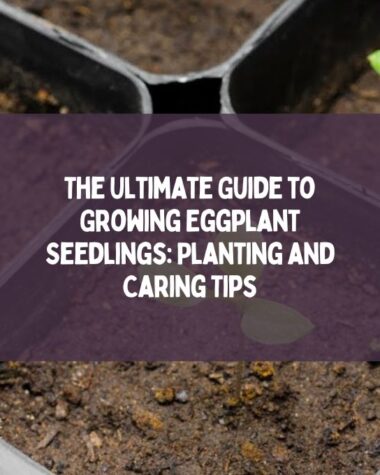Welcome to our comprehensive guide on growing, caring for, and cooking with Little Finger Eggplant. Whether you’re a seasoned gardener or a culinary enthusiast, this article will provide you with valuable insights, tips, and delectable recipes featuring this unique variety of eggplant. From sowing the seeds to harvesting your own Little Finger Eggplants, we’ve got you covered.
Let’s dive right in!
Little Finger Eggplant: An Overview
Little Finger Eggplant, scientifically known as Solanum melongena, is a petite and slender variety of eggplant. Its name originates from its small, finger-like shape, measuring approximately 3 to 4 inches long.
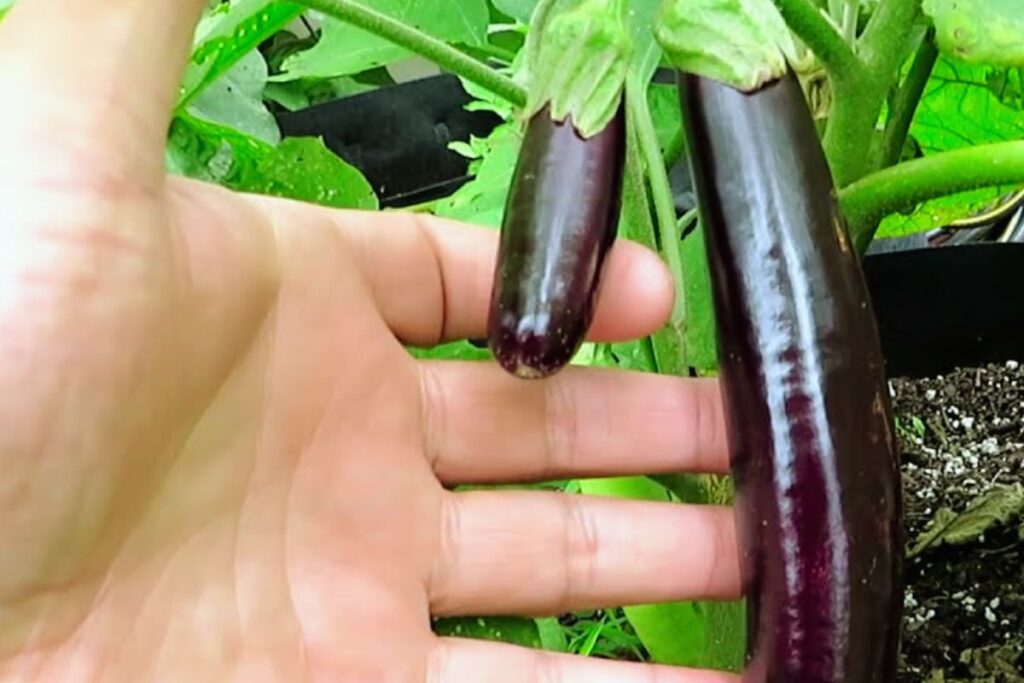
This dwarf eggplant is highly regarded for its tender, mild flavor and delicate skin, making it an excellent choice for both home gardening and culinary adventures.
Why Choose Little Finger Eggplant?
- Ideal for container gardening and small spaces.
- Early maturing variety, producing fruits within 60-70 days.
- Prolific yield, providing an abundance of eggplants per plant.
- Versatile culinary uses, suitable for various recipes.
- Adapts well to different climates, thriving in both warm and cooler regions.
Growing Little Finger Eggplant

Little Finger eggplant (Solanum melongena) is a delightful and compact variety of eggplant that is perfect for gardeners with limited space or those looking to add a unique touch to their vegetable garden.
With its slender, elongated shape and vibrant purple skin, this miniature eggplant not only offers an appealing aesthetic but also delivers a delicious taste.
Here’s how you can grow little finger eggplant.
Seed Selection and Planting
To kickstart your Little Finger Eggplant journey, begin by selecting high-quality seeds from a reputable supplier or garden center. Opt for organic, non-GMO seeds to ensure a healthy and sustainable harvest. Here’s how to plant them:
- Indoor Sowing: Start the seeds indoors, 6 to 8 weeks before the last frost date in your area. Fill seed trays or small pots with a well-draining potting mix. Sow the seeds about a quarter-inch deep and cover lightly with soil. Water gently and keep the trays in a warm location with ample sunlight.
- Outdoor Sowing: If the weather permits and the frost danger has passed, you can directly sow the seeds outdoors. Choose a sunny location in your garden with fertile soil. Plant the seeds a quarter-inch deep and space them approximately 12 inches apart. Ensure the soil remains moist until germination occurs.
Sunlight and Water Requirements
Little Finger Eggplants thrive in full sun, requiring at least 6 to 8 hours of direct sunlight each day. Adequate sunlight ensures healthy growth and a bountiful harvest. As for watering, maintain consistent moisture levels in the soil, but avoid overwatering, as it may lead to root rot.
Water deeply once or twice a week, allowing the soil to dry out slightly between watering sessions.
Soil Preparation and Fertilization
Prepare the soil before transplanting or sowing the Little Finger Eggplant seeds. Aim for a well-draining, loamy soil with a pH range of 5.5 to 6.5. Incorporate organic matter, such as compost or well-rotted manure, to enhance soil fertility and drainage. Additionally, apply a balanced organic fertilizer according to the package instructions to provide essential nutrients for optimal growth.
Transplanting Seedlings
When the seedlings reach about four to six inches in height and have developed a few sets of true leaves, they are ready for transplanting. Follow these steps for successful transplanting:
- Choose a planting area in your garden that receives ample sunlight.
- Dig holes, spacing them 18 to 24 inches apart to allow sufficient room for growth.
- Gently remove the seedlings from their containers, being cautious not to damage the roots.
- Place the seedlings in the holes, ensuring the soil level matches the nursery containers.
- Backfill the holes, gently firming the soil around the base of the plants.
- Water thoroughly to settle the soil and eliminate any air pockets.
Related Reading:
- All About Black Beauty Eggplant: The Gorgeous Purple-Black Fruit
- Yellow Eggplant: The Uncommon and Nutritious Vegetable
- Comprehensive Guide On Growing Eggplant In A Pot
- Will Eggplant Grow in Shade? An Overview
- Growing Brinjal at Home: A Complete Guide
Little Finger Eggplant: Care and Maintenance
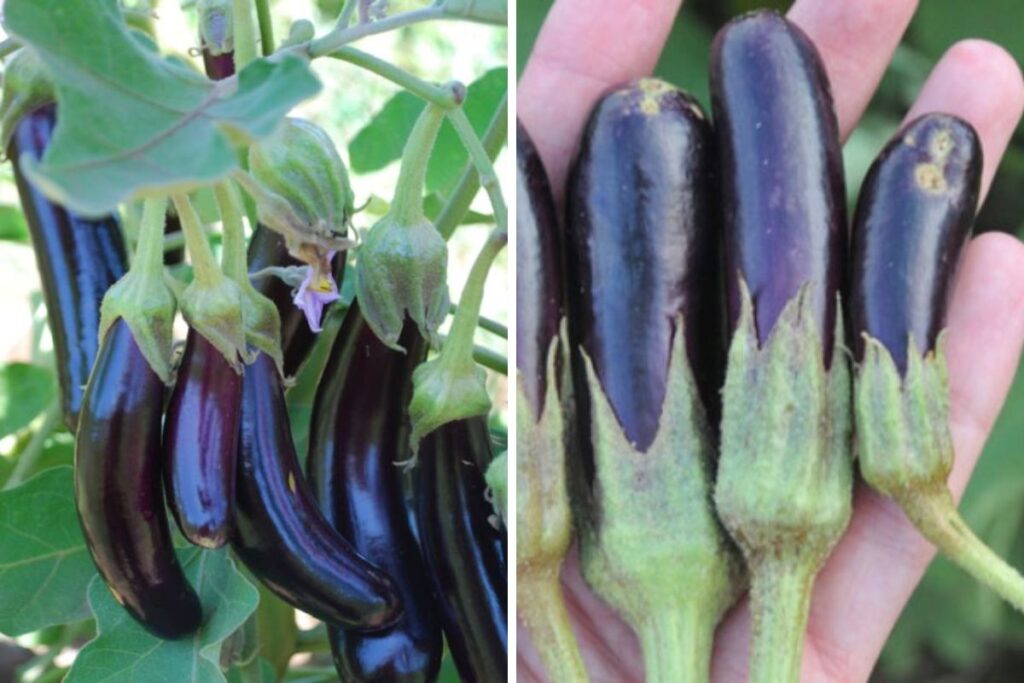
When it comes to caring for Little Finger Eggplant (Solanum melongena), attention to detail and regular maintenance are key to ensuring a bountiful harvest of these charming vegetables.
Providing the right growing conditions is crucial, with a preference for well-draining soil and full sun exposure.
Here’s how can you care for little finger eggplant.
Mulching and Weed Control
Applying a layer of organic mulch around your Little Finger Eggplants offers several benefits. Mulching helps conserve soil moisture, suppresses weed growth, and regulates soil temperature.
Spread a three-inch layer of straw, wood chips, or compost around the plants, ensuring the mulch doesn’t directly touch the stems.
Pruning and Supporting the Plants
Supporting your Little Finger Eggplants prevent the branches from breaking under the weight of the developing fruits. Here’s how to provide adequate support:
- Install stakes or cages around each plant when transplanting.
- As the plants grow, gently tie the main stems to the supports using soft twine or plant clips.
- Prune the plants by removing any weak or damaged branches and suckers that emerge from the leaf axils. This helps promote airflow and prevents diseases.
Pest and Disease Management
While Little Finger Eggplants are relatively resistant to pests and diseases, it’s essential to remain vigilant. Monitor your plants regularly and take prompt action if any issues arise. Here are common pests and diseases to watch out for:
Pests:
- Aphids: Spray a solution of neem oil or insecticidal soap to deter and control aphids.
- Flea Beetles: Introduce natural predators like ladybugs or apply diatomaceous earth to combat flea beetles.
Diseases:
- Early Blight: Avoid overhead watering and remove infected leaves promptly. Apply copper-based fungicides as a preventive measure.
- Verticillium Wilt: Practice crop rotation and avoid planting Little Finger Eggplants in areas where solanaceous plants previously grew.
Companion Plants for Little Finger Eggplants
Now that we understand the basics of companion planting and the appeal of little finger eggplants, let’s explore the perfect companion plants that can boost their growth and flavor.
Basil (Ocimum basilicum)
Basil is an excellent companion plant for little finger eggplants. Its aromatic leaves repel pests like aphids and mites, reducing the risk of infestations on your eggplants. Additionally, basil’s roots emit natural compounds that enhance the flavor of nearby plants, including little finger eggplants.
Marigolds (Tagetes spp.)
Marigolds are often referred to as the “garden’s best friend” due to their numerous benefits. These vibrant flowers not only add beauty to your garden but also repel harmful nematodes that can damage the roots of little finger eggplants. Plant marigolds around your eggplants to create a natural barrier against these pesky pests.
Nasturtiums (Tropaeolum spp.)
Nasturtiums are not only visually appealing but also serve as a fantastic companion plant for little finger eggplants. These trailing plants act as a natural trap for aphids, drawing them away from your precious eggplants.
Additionally, nasturtiums release compounds that deter whiteflies, another common pest that can harm eggplant foliage.
Lettuce (Lactuca sativa)
Lettuce and little finger eggplants make an ideal pairing in the garden. The broad leaves of lettuce provide shade and help prevent weeds from taking over. In return, the eggplants provide vertical support for the lettuce, creating a mutually beneficial relationship. This combination maximizes space utilization and promotes healthy growth for both plants.
Peppers (Capsicum spp.)
Peppers, such as bell peppers or chili peppers, make great companions for little finger eggplants. Both plants belong to the same family, Solanaceae, and have similar cultural requirements.
Planting them together allows for efficient space utilization while creating an aesthetically pleasing garden bed. The natural compounds released by peppers can also help repel pests that may harm the eggplants.
Chives (Allium schoenoprasum)
Chives are a versatile herb that complements the growth of little finger eggplants. Planting chives alongside your eggplants helps deter pests like aphids and Japanese beetles. Moreover, their purple flowers attract beneficial insects like bees and hoverflies, which aid in pollination and pest control.
Little Finger Eggplant Recipes

Little Finger eggplants (Solanum melongena) are not only visually appealing but also offer a unique flavor that can elevate your culinary creations. These petite eggplants are versatile and can be incorporated into a variety of delicious recipes.
Here are some Little Finger eggplants recipes.
1. Roasted Little Finger Eggplant with Herbed Quinoa
Ingredients:
- 8 Little Finger Eggplants
- 1 cup quinoa
- 2 cups vegetable broth
- 1 tablespoon olive oil
- 1 garlic clove, minced
- 1 tablespoon chopped fresh herbs (e.g., parsley, basil, thyme)
- Salt and pepper to taste
Instructions:
- Preheat your oven to 400°F (200°C). Cut the Little Finger Eggplants in half lengthwise.
- Place the eggplant halves on a baking sheet, drizzle with olive oil, and season with salt and pepper.
- Roast in the oven for 15-20 minutes, or until the eggplants are tender and slightly caramelized.
- In a saucepan, combine the quinoa and vegetable broth. Bring to a boil, then reduce the heat and simmer for 15-20 minutes, or until the quinoa is cooked and fluffy.
- In a separate pan, heat the olive oil and sauté the minced garlic until fragrant. Add the cooked quinoa and chopped fresh herbs, stirring to combine.
- Serve the roasted Little Finger Eggplant halves over a bed of herbed quinoa. Garnish with additional herbs, if desired.
2. Little Finger Eggplant Caponata
Ingredients:
- 8 Little Finger Eggplants, cubed
- 1 onion, finely chopped
- 2 celery stalks, finely chopped
- 1 red bell pepper, diced
- 3 garlic cloves, minced
- 1 can (14 oz) diced tomatoes
- 1/4 cup red wine vinegar
- 2 tablespoons capers
- 2 tablespoons olives, sliced
- 2 tablespoons fresh basil, chopped
- Salt and pepper to taste
- Olive oil for cooking
Instructions:
- Heat a drizzle of olive oil in a large skillet over medium heat. Add the chopped onion, celery, and red bell pepper. Sauté until the vegetables are softened.
- Add the minced garlic and cubed Little Finger Eggplants to the skillet. Cook for a few minutes until the eggplants start to brown slightly.
- Pour in the diced tomatoes and red wine vinegar. Season with salt and pepper. Stir well to combine.
- Reduce the heat to low, cover the skillet, and simmer for 20-25 minutes, or until the eggplants are tender.
- Stir in the capers, sliced olives, and fresh basil. Continue cooking for an additional five minutes to allow the flavors to meld.
- Remove from heat and let the caponata cool slightly. Serve warm or at room temperature as a dip with crusty bread or as a topping for crostini.
Related Reading:
- How to germinate Tomato from Seeds faster?
- Japanese Cucumber Info: How to Grow Japanese Cucumber From Seed?
- White Pumpkins: A Guide to This Unique and Versatile Variety
- What is the Best Way to Freeze Zucchini?
- How To Grow Delicious Danvers Carrots?
- Snake Plant – A Growing, Types, Benefits Guide
Conclusion
Little Finger Eggplant may be small in size, but it packs a punch when it comes to flavor and culinary potential. Whether you’re an experienced chef or an amateur cook, this delightful vegetable offers endless opportunities to elevate your dishes.
From creamy eggplant parmesan to charred grilled skewers, Little Finger Eggplant can turn any meal into a memorable experience.
So, why not give it a try and let this tiny wonder add a touch of magic to your culinary adventures?
FAQs about Little Finger Eggplant
What is the ideal growing season for Little Finger Eggplant?
Little Finger Eggplant thrives in warm weather, making it ideal for cultivation during the summer months. The plant requires a minimum temperature of 70°F (21°C) for optimal growth. It is highly sensitive to frost, so ensure you plant it after the last frost date in your region.
How long does it take for Little Finger Eggplant to mature?
On average, Little Finger Eggplant takes approximately 65-75 days from seed to harvest. However, the exact time may vary depending on growing conditions and climate.
How do I know when Little Finger Eggplant is ready for harvest?
When Little Finger Eggplant reaches a length of 4-6 inches and the skin appears shiny and firm, it is a sign that it is ready for harvest. Gently pressing your finger against the skin should leave a slight indentation without causing damage.
Can I grow Little Finger Eggplant in containers?
Absolutely! Little Finger Eggplant is well-suited for container gardening. Select a container with a depth of at least 12 inches to accommodate the plant’s root system. Ensure the container has drainage holes to prevent waterlogging.
Are there any pests or diseases that affect Little Finger Eggplant?
Like other eggplant varieties, Little Finger Eggplant is susceptible to certain pests and diseases. Common pests include aphids, flea beetles, and spider mites. To mitigate this, regularly inspect the plants and apply organic pest control methods. Diseases such as bacterial wilt and powdery mildew can be prevented by practicing crop rotation and maintaining proper air circulation.
Can I freeze Little Finger Eggplant for future use?
Yes, you can freeze Little Finger Eggplant! Begin by blanching the eggplants in boiling water for a couple of minutes, then transfer them to an ice bath to stop the cooking process. Once cooled, drain and pat dry the eggplants before placing them in airtight freezer bags or containers. They can be stored in the freezer for up to six months.
